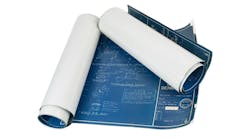It’s important for shop operators to proactively take a look at their annual training initiatives. You need to be smart about whom you train, when you train and your purpose of training to maximize the long-term value of the investment.
Without a yearlong plan, you’ll end up “over-training, not training,” or providing the wrong training for your staff, says Donna Miller, I-CAR instructor and CEO of Automotive Compliance Solutions of North Carolina. In addition, you might run out of money in your training budget and not have enough cash flow to cover your needs.
Miller offers a few basic tips to help plan your shop’s annual training needs.
Annual training requirements vary greatly from shop to shop based on leadership goals, business strategies and program affiliations. There isn’t one go-to resource that outlines all training your company might need. Most training providers do a good job of communicating course offerings, schedules and requirements, but the information is segmented. It’s the responsibility of shop operators to compile the information into one centralized place and develop an integrated framework for the company’s training initiatives.
There are four main components of planning your training needs:
1. Think about your immediate requirements. For example, there might be a new technical training requirement for a newly purchased piece of equipment, a course required to maintain your I-CAR Gold Class designation, or a regulatory requirement issued by the Environmental Protection Agency (EPA) or Occupational Safety and Health Administration (OSHA).
2. Consider your long-term goals and future vision for the business. You might want to qualify for a new third-party certification, OEM or insurance program, which could dictate a certain set of training initiatives. It’s beneficial to work toward acquiring those training requirements over time to avoid a significant amount of training all at once.
3. Assess the specific organizational requirements of each training. Although certain information could be beneficial for multiple technicians, only one member of your organization might be required to attend. In those circumstances, you could send one person and have them train the rest of your staff secondhand afterward. That allows you to maximize the value from information that one technician has learned, and avoid wasting time and money sending too many people.
4. Determine where you have training gaps within your organization. It’s important to ensure you have enough people trained on various functions so there is a backup plan in place in case a key technician is ill, injured or terminated. Workflow will halt if one person is absent and nobody else has the knowledge to fill in. You don’t want to fully rely on one person for any duty, so it’s a good idea to have at least two people cross-trained for every position in the shop.
Make a detailed list of each training class necessary to accomplish your immediate needs and long-term goals, and highlight each specific employee who should attend.
Proactively budget for the expense of those training initiatives by adding up the cost of each training course outlined in your planning document. Calculating the financial commitment for your training needs helps identify whether you’ll have the cash flow to make it happen, and how much money should be reserved each month for the expense. And if cash is tight, budgeting also helps prioritize training needs when certain goals need to be put on hold.
Schedule each technician’s attendance at every training session appropriately. Identify the best time to send each staff member, and assess how you will fill the void if a certain technician is away at training. If there is a particular class that several technicians need, it’s not a good idea to send them all at once in order to maintain production back at the shop.
Try to stagger training whenever possible. Most training organizations provide the same courses repeatedly throughout the year to accommodate your staff’s schedule. Put those scheduled classes on a yearlong calendar.
Scheduling appropriately helps technicians plan for the absence, and helps office employees appropriately schedule jobs based upon who will be present each day at the shop.
Make sure to track your training accomplishments as they happen. Keep detailed records of the training each employee has taken so you can easily monitor progress toward the elements outlined on your training plan.
Preparing a detailed training plan is part of being a great shop leader. It demonstrates to your staff that you see value in the effort, and opens your business to positive change. Your financial and production efficiencies will also be greatly enhanced by planning and strategizing. You will have control over training, rather than having training control you.



